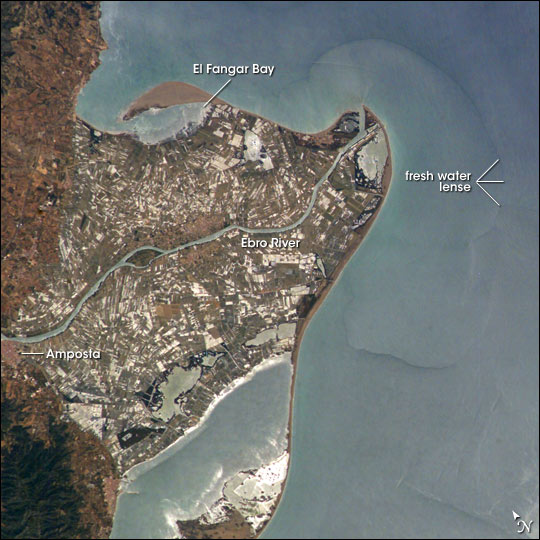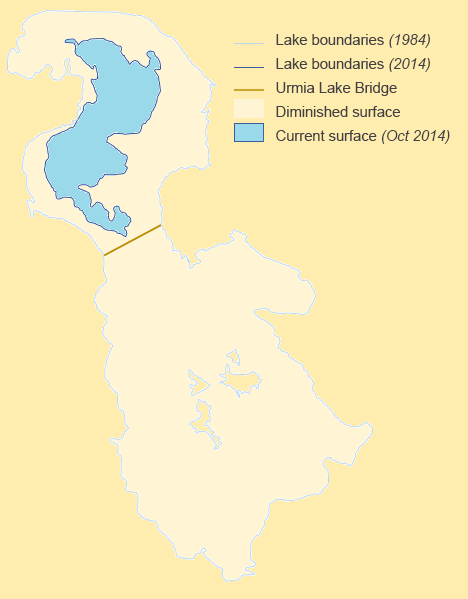|
Sufi Chay
Sufi Chay ( fa, صوفی چای) is a river in north-west Iran, at 37° 19' 45" N, 46° 4' 36" E. The river rises at Mount Sahand in the mountains to the east of Lake Urmia, and flows south past Alavian and Senshon till it reaches Maragheh city where it turns east and enters Lake Urmia in a large delta at Bonab Bonab ( az, Binab, fa, بناب; also Romanized as Bonāb and Benāb; also known as Bināb, Bunab, Binov, and Binev) is a city and capital of Bonab County, East Azerbaijan Province, Iran. Bonab is 120 km south of Tabriz (the capital of East Azerb .... at Wikimapia. 
References [...More Info...] [...Related Items...] OR: [Wikipedia] [Google] [Baidu] |
Rivers Of Iran
A river is a natural flowing watercourse, usually freshwater, flowing towards an ocean, sea, lake or another river. In some cases, a river flows into the ground and becomes dry at the end of its course without reaching another body of water. Small rivers can be referred to using names such as creek, brook, rivulet, and rill. There are no official definitions for the generic term river as applied to geographic features, although in some countries or communities a stream is defined by its size. Many names for small rivers are specific to geographic location; examples are "run" in some parts of the United States, " burn" in Scotland and northeast England, and "beck" in northern England. Sometimes a river is defined as being larger than a creek, but not always: the language is vague. Rivers are part of the water cycle. Water generally collects in a river from precipitation through a drainage basin from surface runoff and other sources such as groundwater recharge, s ... [...More Info...] [...Related Items...] OR: [Wikipedia] [Google] [Baidu] |
Bonab
Bonab ( az, Binab, fa, بناب; also Romanized as Bonāb and Benāb; also known as Bināb, Bunab, Binov, and Binev) is a city and capital of Bonab County, East Azerbaijan Province, Iran. Bonab is 120 km south of Tabriz (the capital of East Azerbaijan province),near Lake Urmia. According to the 2016 census, its population was 89,259. The majority of the population of Bonab speak Azerbaijani language and they are ethnically Azerbaijanis. Based on the archaeological signs found in old Bonab city explorations, the history of this city dates back six thousand years. Also the discovery of old earthenware and metal ware and signs of urban civilization prove this ancient history. Bonab has 25 registered historical monuments on the list of Iran’s national monuments, out of which, 8 are under protection. Bonab city is located on the slopes of Sahand Mountain and in the fertile plains. Handicraft production is seasonal, taking place mostly in rural areas. There are 500 important produc ... [...More Info...] [...Related Items...] OR: [Wikipedia] [Google] [Baidu] |
River Delta
A river delta is a landform shaped like a triangle, created by deposition of sediment that is carried by a river and enters slower-moving or stagnant water. This occurs where a river enters an ocean, sea, estuary, lake, reservoir, or (more rarely) another river that cannot carry away the supplied sediment. It is so named because its triangle shape resembles the Greek letter Delta. The size and shape of a delta is controlled by the balance between watershed processes that supply sediment, and receiving basin processes that redistribute, sequester, and export that sediment. The size, geometry, and location of the receiving basin also plays an important role in delta evolution. River deltas are important in human civilization, as they are major agricultural production centers and population centers. They can provide coastline defense and can impact drinking water supply. They are also ecologically important, with different species' assemblages depending on their landscape posi ... [...More Info...] [...Related Items...] OR: [Wikipedia] [Google] [Baidu] |
East
East or Orient is one of the four cardinal directions or points of the compass. It is the opposite direction from west and is the direction from which the Sun rises on the Earth. Etymology As in other languages, the word is formed from the fact that east is the direction where the Sun rises: ''east'' comes from Middle English ''est'', from Old English ''ēast'', which itself comes from the Proto-Germanic *''aus-to-'' or *''austra-'' "east, toward the sunrise", from Proto-Indo-European *aus- "to shine," or "dawn", cognate with Old High German ''*ōstar'' "to the east", Latin ''aurora'' 'dawn', and Greek ''ēōs'' 'dawn, east'. Examples of the same formation in other languages include Latin oriens 'east, sunrise' from orior 'to rise, to originate', Greek ανατολή anatolé 'east' from ἀνατέλλω 'to rise' and Hebrew מִזְרָח mizraḥ 'east' from זָרַח zaraḥ 'to rise, to shine'. '' Ēostre'', a Germanic goddess of dawn, might have been a personificati ... [...More Info...] [...Related Items...] OR: [Wikipedia] [Google] [Baidu] |
Maragheh
Maragheh ( fa, مراغه, Marāgheh or ''Marāgha''; az, ماراغا ) is a city and capital of Maragheh County, East Azerbaijan Province, Iran. Maragheh is on the bank of the river Sufi Chay. The population consists mostly of Iranian Azerbaijanis who are bilingual in Azerbaijani and Persian. It is from Tabriz, the largest city in northwestern Iran. History Pre-Islamic history It has been long suggested that Maragheh was identical with Phraaspa/Phraata, the winter capital of Atropatene. The 9th-century Muslim historian al-Baladhuri (died 892) reports that the town was originally known as Akra-rudh (called "Afrah-rudh" by Ibn al-Faqih, and "Afrazah-rudh" by Yaqut al-Hamawi) a Persian name which means "river of Afrah", and which the Russian orientalist Vladimir Minorsky considered to seem reminiscent of the name of Phraata. He added that it is unlikely that Maragheh did not exist during the Roman era, due to its favorable location. Rule under the caliphate and Sajids ... [...More Info...] [...Related Items...] OR: [Wikipedia] [Google] [Baidu] |
Alavian, East Azerbaijan
Alavian ( fa, علويان, translit=‘Alavīān) is a village in Sarajuy-ye Gharbi Rural District, in the Central District of Maragheh County, East Azerbaijan Province, Iran Iran, officially the Islamic Republic of Iran, and also called Persia, is a country located in Western Asia. It is bordered by Iraq and Turkey to the west, by Azerbaijan and Armenia to the northwest, by the Caspian Sea and Turkmeni .... At the 2006 census, its population was 2,238, in 579 families. References Towns and villages in Maragheh County {{Maragheh-geo-stub ... [...More Info...] [...Related Items...] OR: [Wikipedia] [Google] [Baidu] |
North-west
The points of the compass are a set of horizontal, radially arrayed compass directions (or azimuths) used in navigation and cartography. A compass rose is primarily composed of four cardinal directions—north, east, south, and west—each separated by 90 degrees, and secondarily divided by four ordinal (intercardinal) directions—northeast, southeast, southwest, and northwest—each located halfway between two cardinal directions. Some disciplines such as meteorology and navigation further divide the compass with additional azimuths. Within European tradition, a fully defined compass has 32 'points' (and any finer subdivisions are described in fractions of points). Compass points are valuable in that they allow a user to refer to a specific azimuth in a colloquial fashion, without having to compute or remember degrees. Designations The names of the compass point directions follow these rules: 8-wind compass rose * The four cardinal directions are north (N), east (E), s ... [...More Info...] [...Related Items...] OR: [Wikipedia] [Google] [Baidu] |
South
South is one of the cardinal directions or compass points. The direction is the opposite of north and is perpendicular to both east and west. Etymology The word ''south'' comes from Old English ''sūþ'', from earlier Proto-Germanic ''*sunþaz'' ("south"), possibly related to the same Proto-Indo-European root that the word ''sun'' derived from. Some languages describe south in the same way, from the fact that it is the direction of the sun at noon (in the Northern Hemisphere), like Latin meridies 'noon, south' (from medius 'middle' + dies 'day', cf English meridional), while others describe south as the right-hand side of the rising sun, like Biblical Hebrew תֵּימָן teiman 'south' from יָמִין yamin 'right', Aramaic תַּימנַא taymna from יָמִין yamin 'right' and Syriac ܬܰܝܡܢܳܐ taymna from ܝܰܡܝܺܢܳܐ yamina (hence the name of Yemen, the land to the south/right of the Levant). Navigation By convention, the ''bottom or down-facing side'' of ... [...More Info...] [...Related Items...] OR: [Wikipedia] [Google] [Baidu] |
Lake Urmia
Lake Urmia; az, اۇرمۇ گؤلۆ, script=Arab, italic=no, Urmu gölü; ku, گۆلائوو رمیەیێ, Gola Ûrmiyeyê; hy, Ուրմիա լիճ, Urmia lich; arc, ܝܡܬܐ ܕܐܘܪܡܝܐ is an endorheic salt lake in Iran. The lake is located between the provinces of East Azerbaijan and West Azerbaijan in Iran, and west of the southern portion of the Caspian Sea. At its greatest extent, it was the largest lake in the Middle East and the sixth-largest saltwater lake on Earth, with a surface area of approximately , a length of , a width of , and a maximum depth of . By late 2017, the lake had shrunk to 10% of its former size (and 1/60 of water volume in 1998) due to persistent general drought in Iran, but also the damming of the local rivers that flow into it, and the pumping of groundwater from the surrounding area. This dry spell was broken in 2019 and the lake is now filling up once again, due to both increased rain and water diversion from the Zab River by th ... [...More Info...] [...Related Items...] OR: [Wikipedia] [Google] [Baidu] |




